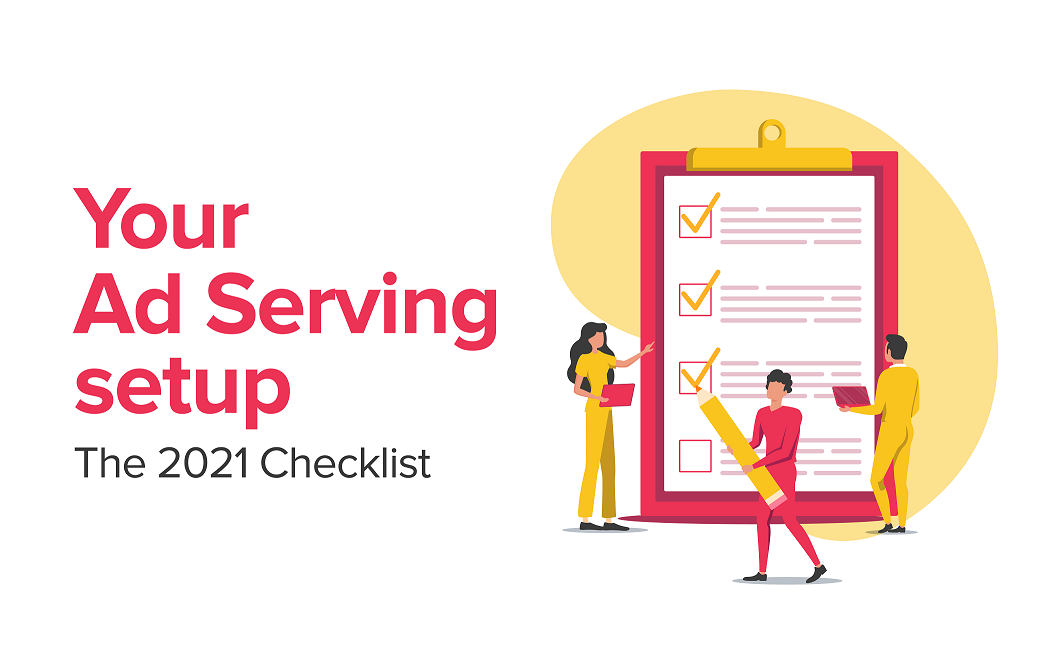Reflecting On 2024 – Expert Insights on the Programmatic Industry
As the digital advertising landscape continues to evolve, programmatic advertising remains at the forefront of innovation, shaping the way brands…

In our industry, the generation of revenue is always a motivation to do things better, and a proper Ad Serving setup will always help you to achieve this goal. And so this article will look to explain how you can approach the technological development of your Ad Serving setup in a fully controllable manner – from management, optimization and the ongoing monitoring of performance.
What is an Ad Serving setup?
Do you need a Consent Management Platform?
How to create and manage your Ad Serving setup?
How to implement Header Bidding properly?
How to evaluate Ad Serving setup performance?
How to achieve better results with your Ad Stack?
An Ad Serving setup can be described as a series of connections related to the main ad server (for example, Google Ad Manager), responsible for the emission of ads that could flow from the various number of the demand channels applied to it. It does not necessarily mean that the ads need to be integrated directly into the ad server, but in most cases – it does.

Every Publisher with even a snippet (1%) of European-based traffic needs to implement the valid CMP – Consent Management Platform (please check for other legal requirements related to GDPR for the markets outside European geos). This has become a worldwide requirement so as to allow users to choose what kind of personal data they are willing to share with the Publisher; but what is more, it allows users to check whether the initial implementation of CMP is valid.
From the perspective of having a coherent and considered structure, it is important to triple check whether the consents are being passed to your ad server (and other monetization related tools, like Header Bidding wrapper) correctly. If not, they might interfere with the way that the demand channels recognize your inventory and ultimately this may lead to the inventory’s devaluation. Because maximizing the pressure of the Programmatic auction should be the main goal of Publishers, it is better to make sure that the whole ecosystem has a clean and understandable structure that maximizes the revenue from all accessible demand sources.
It is a fact that the setup configurations need to be checked and adjusted from time to time, but we need to be careful and observant in terms of the implementations of the ‘core’ demand channels like AdExchange or Header Bidding because they are going to be the main sources of the revenue obtained by you. But how to make them as competitive and tightened up as possible? Here I want to introduce the main principle that you should keep in mind while working on the details of the setup: all of those technologies need to breathe. And they need some time to be properly evaluated.
Let’s start with the ADX monetization – when preparing inventory for ADX you are preparing it for the other demand channels as well. It is important to see if all of the ad units can work on the chosen ad formats and if those can achieve the proper fill rate results. If not, it is better to cut those formats off as they can badly influence the user experience, and obviously, we rely on the users as they drive traffic to the site. While thinking about preparing a good core setup, you should think about choosing the right placements for the formats as well; as we want them to achieve the proper quality values, like CTRs or Viewability. Here you should secure a proper percentage volume, as those metrics are key driving factors for the Advertisers.
You can say that better quality inventory equals more returning Advertisers. Once you prepare your ad units grid, you can start to think about covering those with more demand channels. But be mindful of the fact that when focusing on the technological development you should think about confirming whether the change (like adding more demand channels) is bringing you satisfying results or is having any unwanted impact on the setup – to do so, you should gather the data for a couple of days; and only then move on with any bigger change. By doing so, you will avoid any misinterpretations of those changes and achieve more control over the monetization performance.
Applying Header Bidding or Open Bidding solutions to your Ad Serving setup will have an impact on the daily revenue generated by the monetization; and this is something that we aim for as we want to maximize the competition within your ad unit setup. To implement Header Bidding to your website, you need to add a dedicated JavaScript code to the section. When implemented properly, the script will trigger the auction. On the other hand, Open Bidding is a Google Ad Manager add-on and does not require additional web development – however, it’s only available to the Publishers who have already used Ad Manager as their ad server.
The key factor is to allow the market to better recognize the accessible inventory of yours and since we know that it will take a while – you need to observe how the SSPs that bid on your ad units are working in terms of their efficiency. Our main recommendation is to check on the data after 3-4 days and make some decisions over the implemented partners – if at least 3 or 4 of the SSPs are performing well, that would mean that you can give yourself some time to observe your setup and evaluate its performance in the long term. That does not mean that you can leave the setup untouched for a quarter. Instead, you need to observe the pricing of your inventory and its efficiency.
Here is a list of the features that you should always double check on when thinking about the efficiency of your newly constructed Programmatic setup:

Let’s say that the overall performance of the created Ad Serving setup is satisfying, but you see that the quality metrics are dropping. How to react to such a situation and apply the solutions that will help your inventory to achieve better results? Be active in looking for the right optimization strategy; besides the strict technological development, optimization of the features in use is key. Here are a number of features that you may try:
Once again, we would not recommend making multiple changes over the same inventory, but instead, you should highlight the roadmap of the changes that can be worked on in the longer schedule. Once you have a well-worked setup with additional supporting technologies applied, you can focus on the long term analysis of its impact and detect the weak spots that you can add to your next development sprint. To end with a high note, you may also consider the steps that might require an additional specialist team so as to lay the groundwork for an even better environment for your ad serving setup. Please check:
There is no one-size-fits-all Ad Serving setup solution, as the conditions of its functioning change a lot – it is important to be observant and determined to move forward in spite of all the possible obstacles. We at Yieldbird can always recommend and suggest some actions that will give you a world-class, high performing ad stack!

Karol Jurga
Chief Revenue Officer
See it in action.